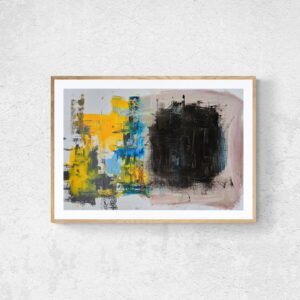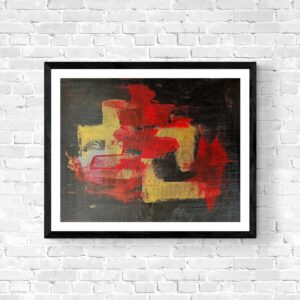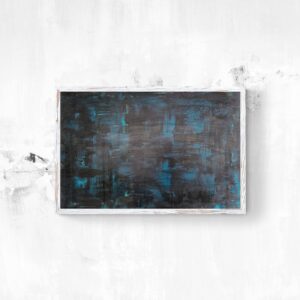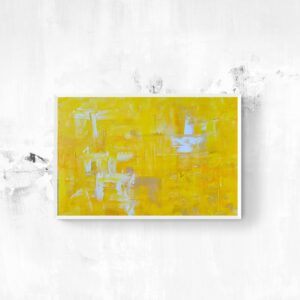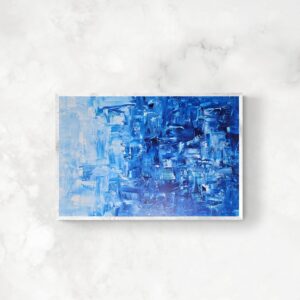
SANTA FE — In 1998, science fiction writer Ted Chiang published “Story of Your Life,” in which aliens come to Earth in “looking glasses,” mirrored spaceships that act as communication devices. The central character, linguist Dr. Louise Banks, is tasked with deciphering the aliens’ language. In turn, she begins to see time like they do — as simultaneous events — and ultimately glimpses her own future.
A reference to “Story of Your Life” is tucked into the exhibition guidebook for Once Within a Time, SITE Santa Fe’s 12th International. Curator Cecilia Alemani identified Chiang as one of the exhibition’s 27 “figures of interest” — catalysts for the 71 participating artists and more than two dozen writers. What struck me about Alemani’s inclusion of Chiang’s writing was not the reference to extraterrestrial life (many readers will be familiar with the accounts of UFO sightings in New Mexico), but the surreal, endlessly fascinating phenomenon of the looking glass.
Once Within a Time takes reflection as a major cue. Within each curated theme, such as “The Wheel of Telling” and “The Secret Life of Puppets,” are mirror images, doubles, reversals, and echoes, along with symmetries of place, histories, peoples, and legends — offering exhibition visitors concurrent rather than sequential events, in which multiple perspectives and timelines unfold. Even the treatment of the exhibition title, in which “Time” is printed upside down, gestures to alternative ways of experiencing the temporal, reflective nature of both art and language.

Among the many echoing narratives are works by Nora Turato and Will Rawls. Turato’s mural “I WANT OUT!” (2025), a red vinyl triptych with one panel per word, is installed on the exterior of SITE Santa Fe, the main venue; inside the museum, Rawls’s Amphigory (2022), a series of inky, glitchy screen prints, seems to respond to Turato’s plea with the barely legible phrase “U Can’t Escape Alive.”
In the gallery with Rawls is a suite of 72 computer drawings from 1969 by hard-edge abstract painter Frederick Hammersley, who died in 2009 at age 90. He hit an artistic dry spell in the late ’60s, saying, “I painted myself out,” a condition of exhaustion, liberation, or perhaps both. To shake things up, he enrolled in a computer class for artists at the University of New Mexico. He used the program ART 1 to create multiple printouts of the individual “drawings” that comprise the suite on view, visually undulating abstract compositions of gray monochrome letters, numbers, and punctuation marks. With additional presentations of Chester Nez and the “Original 29” Navajo Code Talkers, Autumn Chacon’s radio frequency installation, and others, visitors may experience some seriously surreal data-driven reverberations.

In SITE’s central gallery space, color-rich reverse paintings on glass — a vase of flowers, a snake, a dreamlike landscape — by Rebecca Salsbury James, born in 1891, were just odd enough to make me linger and consider her time in Taos, New Mexico, with Mabel Dodge Luhan, Georgia O’Keeffe, and other New York-to-Taos transplants. A selection from James’s collection of miniatures, including figurines, mirrors, and devotional objects, is also on view, many of which are in pairs or otherwise doubled. One tells a story, but two hold a conversation.
Elsewhere in the gallery, I felt like I was in a funhouse or hall of mirrors. Louise Bonnet’s fleshy, misshapen, iridescent-skinned figures had me reflecting on my own pale, bony frame as equally warped and grotesque, alien to New Mexico’s desert environment. Katja Seib’s large-scale portrait paintings present the concept of reflection in literal and metaphysical terms. For example, “Cornucopia” (2025) depicts a fortune teller revealing her cards to the viewer; in the background, a framed image of another woman doing the same creates an infinity mirror effect. Nearby, a travel chest that belonged to Doña Tules, dubbed the “Queen of Sin” for her business activities (gambling and possibly a brothel), sits in the corner lit by a red light bulb, which I read as a heavy-handed reference to the stigma applied to other fiercely independent women who’ve come to the region.

Norman Zammitt’s dark paintings of bodily appendages, genitals, and other parts make symmetry seem sensuously sinister; the works on view were censored in Albuquerque when they were shown at the University of New Mexico. Zhang Yunyao also plays with bodily symmetry in his large-scale, abstract graphite drawings on felt. His detailed, dynamic forms bring to mind a corset, cage, or skeleton, in renderings that appear laborious, even painfully pleasurable. Across the gallery, Terran Last Gun’s ink and colored pencil drawings on antique ledger paper repeat symmetrical, hard-edge geometric forms that allude to traditional Piikani visual motifs and modernist abstraction.
Among the show’s themes, “Land of Little Rain” is one of the more obtuse; it does little to reflect or communicate Santa Fe’s complex relationship to and political tensions around water and its increasing scarcity, even with a mural by Minerva Cuevas that references General Electric’s extractive practices. Nor does it make clear the connection between the global warming crisis and the fossil fuel industry in relation to New Mexico — the state is the nation’s third largest energy producer, primarily of oil and gas. If ever there was an unreal topic to explore, it’s life without water. Considering the poignant, reflective nature of water itself, numerous local artists and writers deeply engaged with the topic, and thousands of years of Indigenous knowledge to consult, I found myself wanting a more radical curatorial approach.

Once Within a Time does not shy away, however, from reflecting on the horrors of the atomic bomb and its devastating impact on Japanese communities in New Mexico and beyond. The topic is addressed in several artworks on view at SITE, and others at Finquita, a partner venue seven miles north in the village of Tesuque. David Horowitz’s installation “flock of wingless birds” (2025) consists of 4,555 handmade clear glass marbles scattered on the central gallery’s floor. They represent the men of Japanese descent who were held prisoner in Santa Fe’s internment camps, sites that have since been covered over by the Casa Solana subdivision. Sand in each marble, from a nearby dry arroyo, sparkles like fool’s gold as they refract light. Noted in the exhibition guidebook as the “relentless repetition of one small form,” the installation honors the men’s lives while also illustrating the precarity of navigating past, present, and future.
In an outbuilding at Finquita, formerly the Shidoni bronze foundry, is Na Mira’s destabilizing installation of “Marquee” (2023), a 16mm film that utilizes the floor, multiple mirrors, a 90-degree corner of the room, and a transistor radio to echo, duplicate, and collapse image, narrative, place, and time. Text and audio in both English and Korean point to cultural assimilation, dislocation, and fractured memory.
Stories about New Mexico necessitate discussions about Spanish colonialism and religious conversion. While many people of faith believe that God made humans in his image, a mirror of the divine, Maja Ruznic presents another version of creation. Her commissioned paintings are installed in the New Mexico Museum of Art’s auditorium, placed over some existing traditional murals of St. Francis of Assisi, originally conceived by Donald Beauregard, who died before their completion. Ruznic’s verdant paintings of ghostly figures in the landscape act as gossamer veils to other worlds and ways of knowing, channeling people and spirits that relate, in some cases, to her experiences growing up in Bosnia. When Alemani showed these installation images during her curator’s talk, the audience’s gasp of shock that the older murals were covered made clear that Ruznic had hit a nerve — in all the right ways.

Much of Santa Fe’s history is hidden in plain sight. Daisy Quezada Ureña’s commission “Past [between] Present” (2025) at the New Mexico History Museum interrogates the systems and structures at work in culture while magnifying the importance of personal experiences, histories, and relationships. Among other poignant objects in the installation, whether borrowed, gifted, fabricated, or excavated, are bell fragments from the Pueblo Revolt and soil from the construction site of the Georgia O’Keeffe Museum’s new wing. Here, Quezada Ureña prompts visitors to reflect on the land and stories on which cultural institutions are built. Visible through the museum windows is the Palace of the Governor’s marketplace portal, where Native artists and artisans still sell their works to tourists as they did in the early 1900s. One jewelry maker I spoke with was unaware of Once Within a Time, signaling a lack of communication from museum staff. I was reminded that for all of its outreach efforts, an exhibition as ambitious as this can still overlook the most obvious opportunities for inclusion and representation.
In keeping with what history can reveal, Santa Fe-based artist Godfrey Reggio says, “We are programmed to remember to forget … the word, the symbol, the sign no longer describes the world we live in.” He characterizes his film Once Within a Time (2022), which inspired the exhibition, as a Bardic tale that chronicles an event set in a future when all humans have left reality. In Chiang’s story, the aliens leave Earth in their looking glasses, with no definitive reason why they arrived or departed. SITE’s 12th International reflects numerous layered narratives linked to Santa Fe, ones that are inspiring and generative in tandem with others that are painful, overwhelming, and incomplete. My hope is that the exhibition’s coming and going, like the stories it presents, will help us decipher what the future is trying to communicate.







12th SITE SANTA FE International: Once Within a Time continues at SITE Santa Fe (1606 Paseo de Peralta, Santa Fe, New Mexico) through January 12, 2026. The exhibition was curated by Cecilia Alemani and assistant curator Marina Caron.

